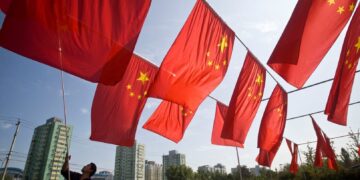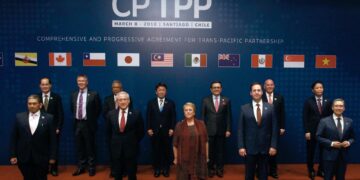Companies with successful sales and distribution systems in China have adopted certain common best practices.Consumer wealth—and private consumption—is expected to grow markedly in the near future. Between 2010 and 2020, China’s economic growth will raise nearly 90 million new households to middle- or affluent-class (earning ¥60,000 [$8,800] or more per year), according to Boston Consulting Group (BCG) research. BCG also expects that by 2020 China will have nearly 800 cities with a level of affluence similar to or greater than Shanghai in 2008.
The spread of economic development and wealth implies greater demand and that companies must expand their footprint rapidly to keep up. To unlock China’s tremendous growth potential, companies must build an effective, sustainable sales and distribution (S&D) system. Foreign and local companies must therefore learn the keys to designing a successful distribution and organization model and avoid common traps during national rollout.
In their attempt to accelerate growth, however, many companies end up with an S&D system in disarray. Such systems typically show these symptoms:
- Sales-force productivity (as defined by sales generated per full-time equivalent and daily sales calls) that is well below industry peers’ average in China, sometimes achieving only one-half or one-third of the average;
- Highly inconsistent sales-force performance with much time spent on administrative, non-revenue generating tasks;
- Account management and resources that are heavily biased toward large, existing markets and accounts with limited attention given to new sources of growth;
- Many distributors and wholesalers with poor retailer or account coverage, logistics, or information technology (IT) capabilities; and
- Limited control over product flow and pricing across regions.
Foreign companies that try to apply proven S&D techniques from their home countries to China usually find the results far from satisfactory. For example, foreign consumer companies typically have better retail capabilities in key account management and point-of-sale (POS) marketing than their Chinese competitors. But these foreign companies often lose out to local players when expanding into the highly fragmented traditional retail sector, which is comprised of small independent stores and small retail chains, and in fast-growing smaller cities that have less organized retail channels. Foreign business-to-business companies—such as those in technology, industrial goods, or healthcare sectors—often find their well-established brand and product advantages nullified by weak channel control and customer coverage relative to local players.
S&D hurdles in China
Companies that underestimate expansion challenges struggle to build effective S&D systems in China. Understanding the top obstacles can help companies prepare solutions to potential problems before launching S&D system transformation and rapid growth programs.
Scarce talent and unsophisticated trade partners
China’s primary S&D challenge is its scarcity of S&D talent—a scarcity exacerbated in recent years by rapid economic growth. To cope with staff attrition and business expansion needs, many companies promote their still-green sales representatives to become city-level managers within less than a year. Furthermore, the capabilities of many distributors and wholesalers remain unsophisticated even after decades of experience. The phenomenon is unsurprising given their tremendous growth with relative ease: Distributors that have been growing 50-100 percent each year just by expanding into underpenetrated markets have not been compelled to build value-adding capabilities, such as logistics or IT systems.
Fragmented markets and channels
China’s highly fragmented markets and channels mean companies must spend a lot of time and money getting their products to small retailers (see the CBR, May-June 2010, Understanding China’s Retail Market). (The top 100 retailers in the United States represent about 60 percent of the retail value, whereas the top 100 retailers in China contribute only 20 percent to the retail value.) Though the distribution system is fragmented and disorganized in most Chinese cities, it is generally worse in small Chinese cities, where most future growth potential lies (see Developing China Sales and Distribution Capabilities). Distribution across provinces and administrative regions is also difficult, because of local protectionism and bureaucratic inefficiencies.
Intense competition
The China market has become crowded with increasingly sophisticated competitors. While foreign companies have been pouring investment into China, bringing their know-how, Chinese companies have matured by learning from their mistakes and observing global practices brought by their foreign counterparts.
Higher costs
Winning the S&D game is becoming more expensive. To reach new consumers, companies must set up infrastructure in remote cities, invest more money in human resources to attract and retain quality staff, and build IT systems to cope with high business volume and the increasing need to track activities at a granular level.
Opaque systems
The lack of visibility of actual business performance and control over business activities in more remote markets often leads to kickbacks or embezzlement by company staff and trade partners. Furthermore, companies find it difficult to obtain reliable, cost-effective information on the performance of potential trade partners. Many companies thus find it difficult to mitigate the potential business loss and legal risks associated with doing business in remote areas.
Despite these challenges, companies should not feel intimidated or avoid taking bold steps to transform their S&D system. By understanding China’s S&D landscape, companies have found ways to expand and maintain an advantage.
Successful S&D systems
Because companies have different starting points, business objectives, and competitors, there is no one-size-fits-all solution to building a successful S&D system. Successful companies tend to follow a few common best practices, however.
Build a robust market fact base
Granular, up-to-date databases on market potential, channel structure, and customer landscape (for example, data broken down by category, price segment, and retailers in a particular city) are unavailable for most industries in China. As a critical first step, many companies—with products ranging from milk to mobile phones—have developed a robust, exhaustive fact base and planning process about where to expand and invest S&D resources down to the individual POS or customer level. Though difficult to set up and often requiring the help of an external agency or temporary staff to create, the fact-base building and subsequent planning processes become much easier to repeat once the system is operational for one or two years. In addition, the process becomes a powerful tool for avoiding inventory build-up, irregular product flow, and pricing problems because it gives companies an objective baseline for allocating targets and resources.
Develop and use two or three consistent S&D models across the country
S&D models generally define how responsibilities for different S&D tasks—such as account coverage, order taking, logistics, and inventory management—are split between a company’s sales team and sales partners. For example, in top cities, companies tend to adopt a direct model in which their own sales force directly covers, and delivers to, key accounts. In smaller cities, many companies maintain their own sales teams to recruit new customers or retailers and take orders while distributors provide logistical support and working capital. Companies must adopt different models based on the complexity of the S&D tasks required and determine the split of tasks based on the capabilities and economics of the distributors and sales force.
Though companies may find it acceptable to allow sales teams in each region or city to define their own S&D models to fit local market needs, companies should prohibit deviations from two or three pre-selected models as much as possible. By avoiding proliferation of S&D models and local practices, companies will take full advantage of common sales tools and processes, including account planning and call procedures. More important, companies can improve control over sales teams and trade activities by measuring performances against a standardized set of metrics as defined in the selected S&D models.
Companies should also tightly control the organization of their field sales force. Though specific designs of functions and roles vary across industries and are highly dependent on the S&D models chosen, companies with an efficient, highly engaged S&D team often use common best practices. One best practice is to set up only four or five reporting layers between the national sales head and the last sales representative on the frontline and have each managerial position control 8-10 sales representatives per reporting layer. Given its short chain of command, such a design improves responsiveness to the market. The design also pushes salespeople to see customers instead of hiding behind managerial or administrative work.
Offer appropriate incentives to trade partners and sales staff
Companies should institute appropriate incentives—and disincentives—for trade partners and sales staff. Many companies often fail to reward their trade partners for good behavior with attractive incentives and seldom penalize wrong behavior severely enough. This usually occurs because of insufficient data or resistance from the sales force or distributors. They may argue against incentive and disincentive policies because it is difficult to capture up-to-date, accurate sales or inventory data to measure performance in a particular market. Though some of the concerns may be valid, many of them could be resolved by building a robust market fact database, investing in IT systems, and tracking processes.
The benefits of implementing a stronger incentive and disincentive system can far outweigh the costs. For example, instead of giving identical trade terms and incentives to all distributors, companies can significantly reduce spending on wholesale discounts or rebates by implementing a scheme in which a full-service, highly capable trade partner achieves a much higher incentive than a less-capable, logistics-service-only distributor. Businesses can often achieve a 3-5 percentage point improvement in margins by implementing this kind of segmented incentive system. Such a system also provides incentives for trade partners to improve their capabilities.
For the sales force, companies will need a highly variable compensation scheme to motivate sales staff in China. In many companies, as much as 40-50 percent of compensation is variable pay. Along with measuring against sales targets, businesses should implement incentives for longer-term channel or customer development tasks such as expanding customer or POS coverage, deepening penetration in new markets, and improving return of trade spending.
Recruit and train strong sales staff—and provide them with necessary tools
Reaching a maximum number of accounts and achieving sales targets are important goals, but the quality of the sales organization is also critical for ensuring long-term profitability and competitive advantage. Given the scarcity of talent and intense competition in China, recruiting and retaining the right sales team is a top priority. Many companies operate extensive programs to recruit from lower-tier cities and away from school campuses, where competition for talent is less intense. (For example, some companies recruit experienced workers who have been forced to retire early because of state-owned enterprise restructuring.) Moreover, providing ample career development opportunities is effective. Some companies have intentionally created more “grades” of sales representatives to increase promotion opportunities without creating extra reporting layers. Another effective way to retain talent is to provide overseas training or rotation opportunities—something that is easier for foreign companies to offer.
Equipping the sales force with tools and guidelines to manage daily activities is essential. Many companies have set up a dedicated sales development team that focuses on advancing tools, such as customer or retailer census and sales-call procedures. In the case of sales calls, guidelines may even include details on how sales representatives should greet customers, given the scarcity of experienced talent.
To enable effective performance and incentive management for trade partners and frontline staff, companies need ample granular, up-to-date sales data. For example, implementing a more complex trade incentive scheme well requires lots of detailed and reliable data. Many companies that have delayed investing in such fact bases and data systems have witnessed their competitors, which made the investment years earlier, reap full advantage from the data.
Manage change in S&D transformations carefully
Given the tremendous internal and external challenges of transforming S&D systems, many companies have adopted a cautious, methodological approach to change. Ideally, companies should conduct several pilots to test newly developed processes and tools across cities with different channel landscapes and stages of development. Companies should also spend significant time and effort communicating changes and the rationale behind the changes to affected employees and trade partners. Apart from building mutual trust and addressing concerns, the communication effort will educate staff and partners, encouraging them to change long-held views and habits.
Time for a review?
Though China’s consumer market offers tremendous potential, its vast territory and significant regional differences make it difficult for companies to develop a sustainable S&D system. To do so, companies must put tremendous effort into creating a fact base, redesigning business models and organizations, and developing tools and IT systems. Rather than avoiding or delaying a potentially inevitable transformation, companies should regularly review the “state of health” of their S&D system and make sure the competition is not leaving them behind.
[box]
Key Questions to Help Launch S&D Improvements
Companies often find it difficult to improve their sales and distribution (S&D) systems, in part because no single way to build an effective S&D system for all companies exists. In addition, the sheer number of staff and external parties involved, the uncertainties about how competitors and customers might respond, and the seemingly “unchangeable” practices and habits rooted in all parts of an organization have kept many companies from making more fundamental improvements.
The following questions should help companies determine where to start, take some initial steps, and plan the actions required to build a lasting S&D advantage in China.
- Does your company have consistent S&D and sales organization models across China? Having only one model might be too restrictive to enable growth across China’s heterogeneous markets. Having more than three models (or worse—not knowing the types of models or practices sales teams are adopting) means the company should assess whether it is allowing too much flexibility in the field.
- What are the key strengths and weaknesses of your company relative to your competitors along each step of the S&D process? Where is your company losing or winning market share? These types of analyses will help create a strong fact base for gaining alignment across the organization, including by helping the company realize its top S&D challenges and where to focus its efforts.
- What are the company’s growth aspirations for China? Can your company’s current S&D system help achieve these goals and meet future coverage requirements, channel evolutions, and customer needs? This type of gap analysis will help the company prioritize weaknesses that should be addressed first. For example, it may help a company decide whether it will focus on recruiting more capable distributors first or building new capabilities in its own sales force.
- Does your company have up-to-date, accurate data with a sufficient level of granularity to guide S&D resource allocation and help control irregular activities such as cross-market product flows? Having a robust, exhaustive fact base on market potential and channel landscape would help enable more targeted resource allocation (such as headcounts and trade spending), better control over pricing and product flows across markets, and more objective benchmarks for measuring the performance of the sales force and trade partners.
[/box]
[author] Hubert Hsu ([email protected]) is a senior partner and managing director in the Boston Consulting Group’s (BCG) Greater China Practice and the leader of the Consumer Practice in Asia. Waldemar Jap ([email protected]), Carol Liao ([email protected]), and Vincent Lui ([email protected]) are partners and managing directors in BCG’s Greater China Practice. [/author]





























